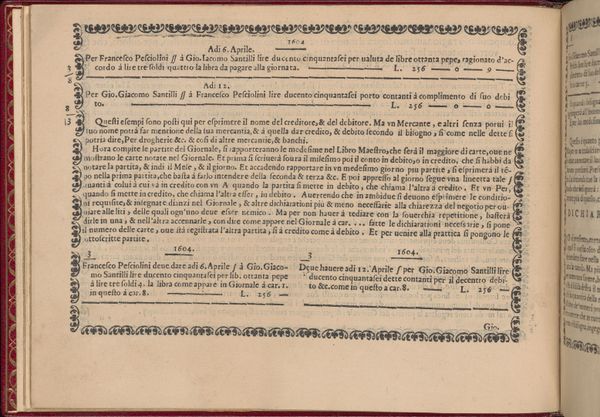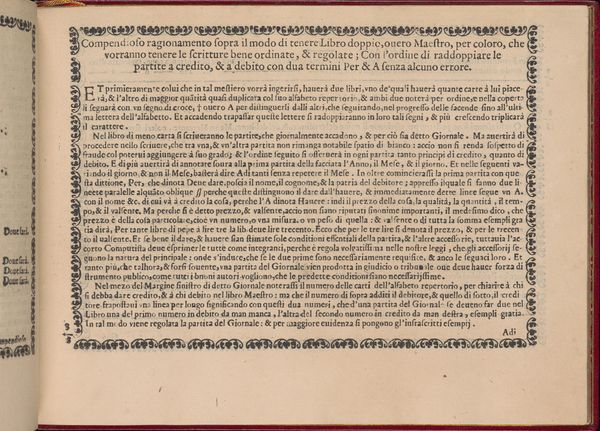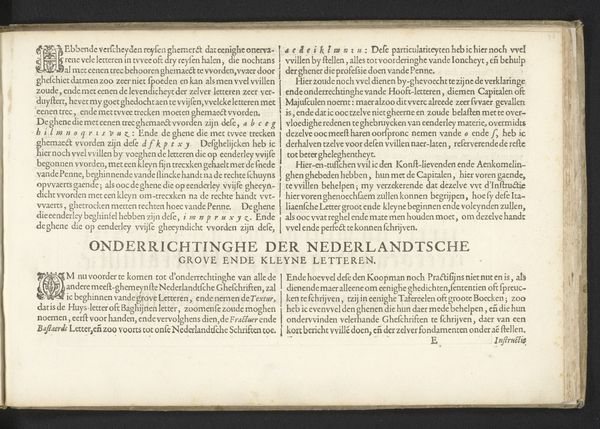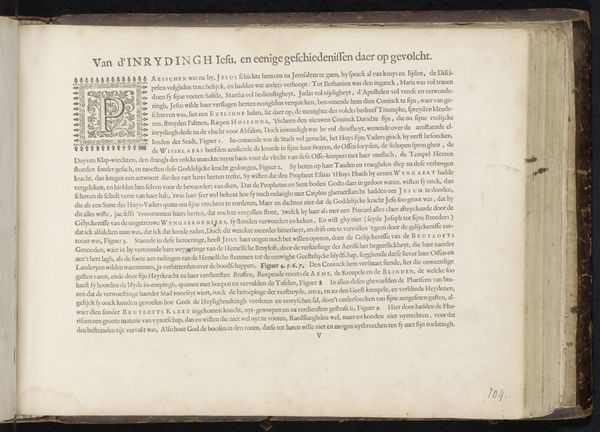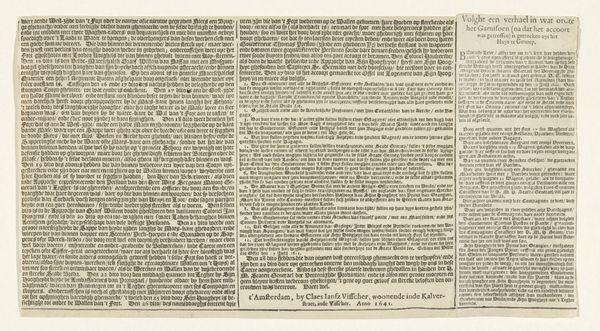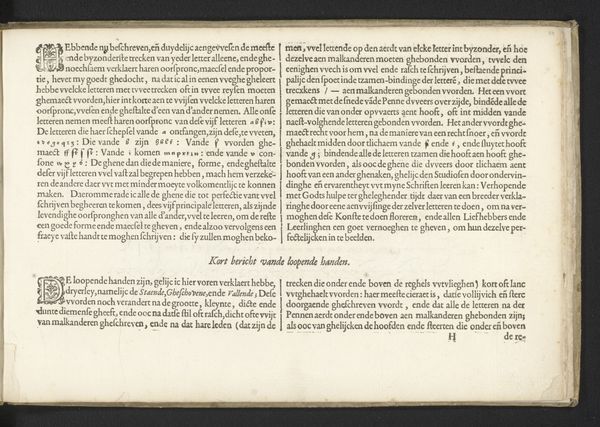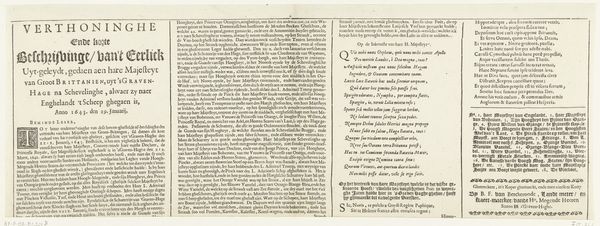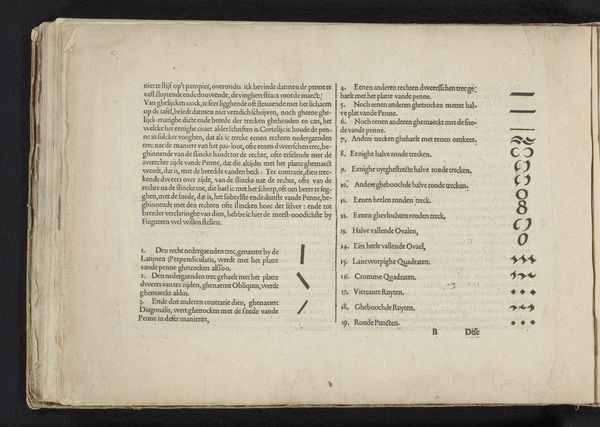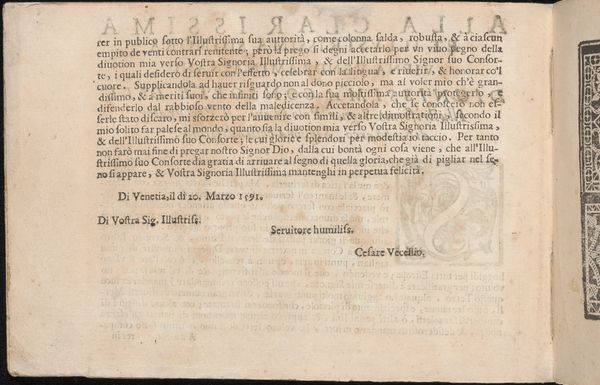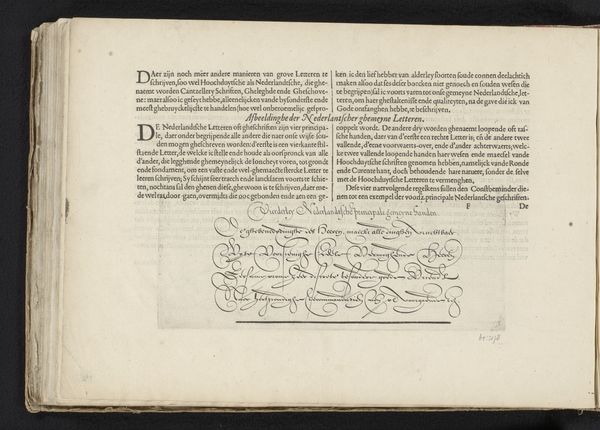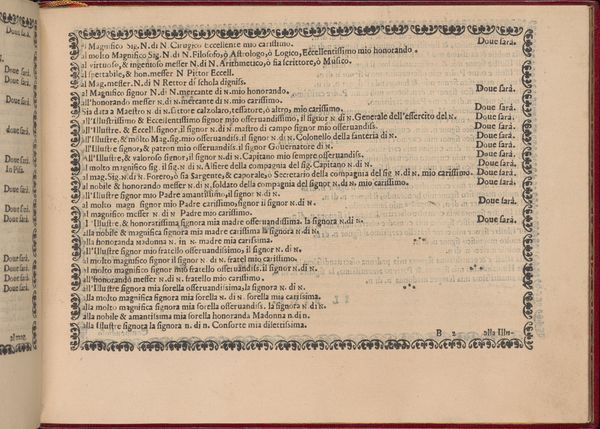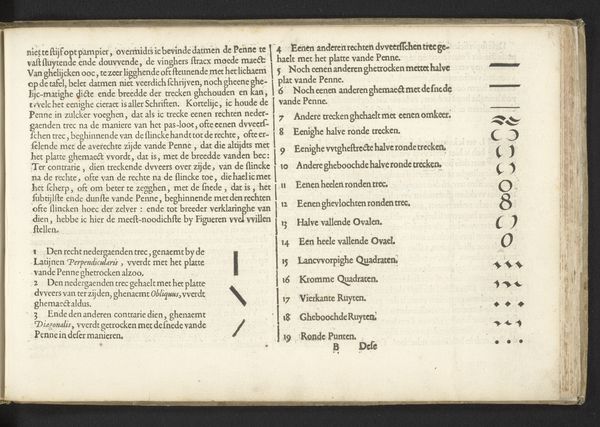
Ghirlanda: Di sei vaghi fiori scielti da piu famosi Giardini d'Italia, page 8 (recto) 1604
0:00
0:00
drawing, print, paper, ink
#
drawing
# print
#
book
#
paper
#
ink
#
italian-renaissance
Dimensions: Overall: 5 7/8 x 7 7/8 in. (15 x 20 cm)
Copyright: Public Domain
Editor: This is "Ghirlanda: Di sei vaghi fiori scielti da piu famosi Giardini d'Italia, page 8 (recto)" made in 1604 by Pietro Paulo Tozzi. It's a drawing and print on paper, residing at the Metropolitan Museum of Art. The Italian Renaissance artwork shows two accounting texts in what appears to be an open book. It's… quite intricate. How would you approach an interpretation of it? Curator: It’s rewarding to dissect its construction. First, note the symmetrical arrangement, almost a mirror image across the central gutter. Then observe how Tozzi employs decorative borders that echo floral motifs—a detail adding visual richness, if somewhat predictably. Focus on the textual elements; notice the distinct hierarchies in script size and weight. What impact does that layering of information have on you? Editor: It makes it seem almost illegible, like decoration. Does that subvert its original practical purpose, maybe? Curator: Intriguing! Semiotics come into play here. Consider these texts as both information carriers and visual objects. The typography’s aesthetic qualities and the patterned border function as visual signifiers, complicating our direct understanding. Further, look at the interplay of negative and positive space, notice how they frame meaning... how the relationship draws attention to structure. Editor: That makes sense, but…what about the flowers the title promises? Are they represented in some abstract way in the decoration? Curator: Potentially, the "flowers" exist only conceptually, not literally depicted. They could symbolize the florid language typical of Renaissance financial records or even allegorically represent wealth itself. Considering that hypothesis, how would that floral framing affect our perception of Renaissance commerce? Editor: I see, it could soften its harsh edges with decoration, so the "flowers" become almost ironic. It does provide new ideas for future research. Thanks! Curator: Exactly, every detail constructs and conveys meaning. That’s the power of formal analysis and art history!
Comments
No comments
Be the first to comment and join the conversation on the ultimate creative platform.
